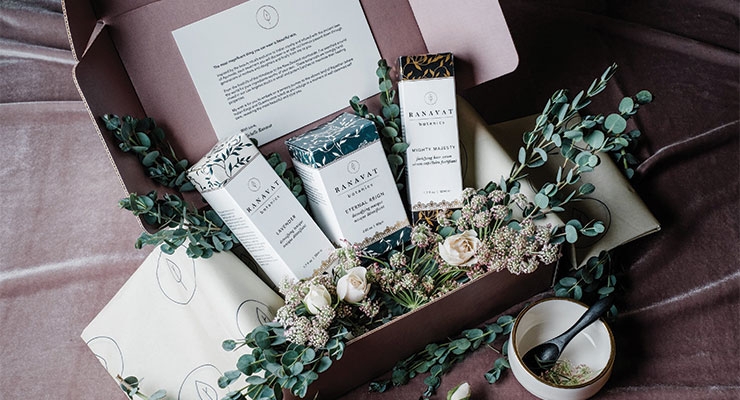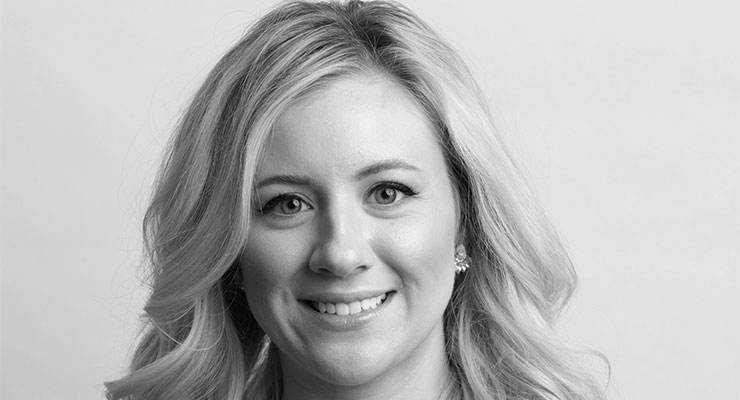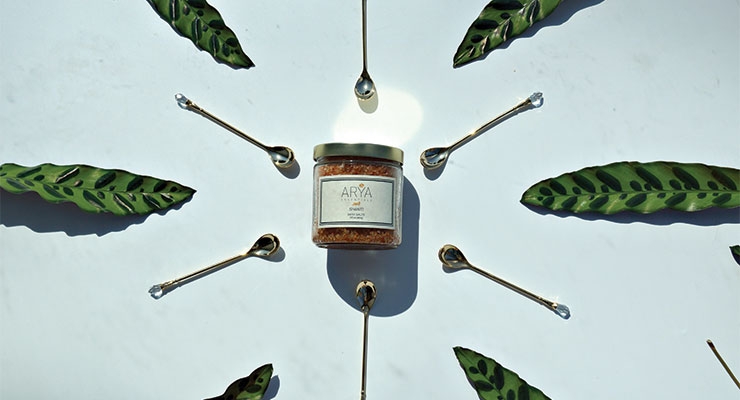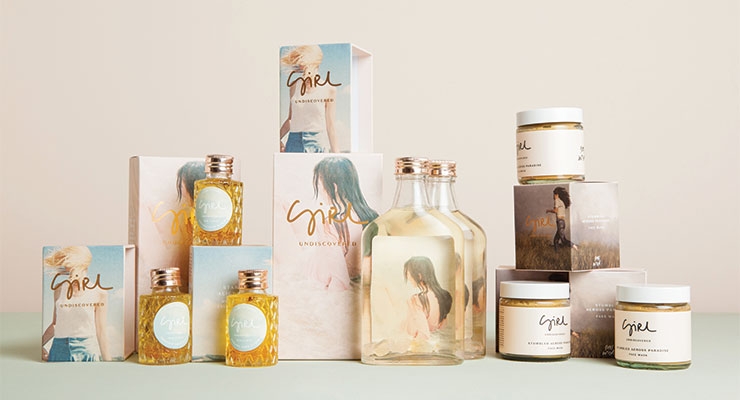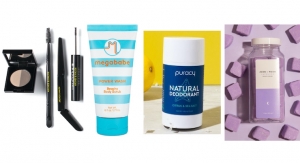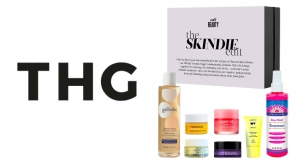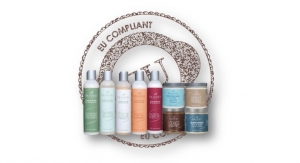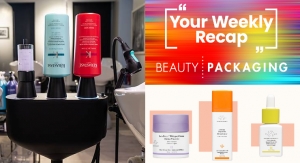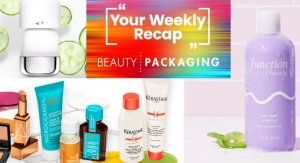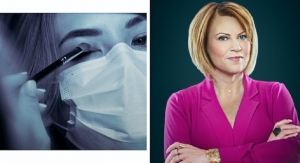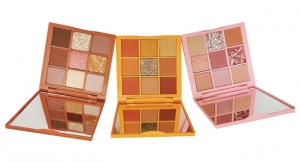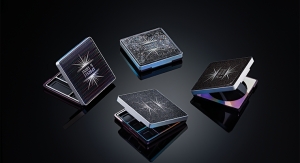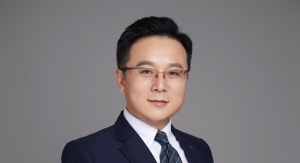Belisa Silva, Contributing Writer06.04.18
Evocative, minimal with a dash of magic, today’s Indie brands are directional, chic and intended to make you feel things. Inspired, no doubt, by the mindfulness movement (think: crystal therapy, essential oils, meditation), and a renewed interest in time-honored practices, the modern Indie market is experiencing a decidedly anti-trend moment. Focusing instead on delivering mood-enhancing benefits through storied ingredients, historical inspirations and specific backstories, it’s clear that gone are the days of addressing consumers’ needs with one-size-fits-all products or fleeting fads.
“Today’s consumer wants unique products, sold by unique retailers, made by unique brands,” says Larissa Jensen, beauty industry analyst for the NPD Group—and a member of Beauty Packaging’s Board of Advisors. She explains, “Brands and retailers that try to be all things to all people will struggle. Curated assortments, clearly defined muses or niches, and fresh retail approaches will be the keys to success in 2018. No brand or retailer has gone out of business by listening more closely to their consumers.”
According to Jensen, what the 2018 Indie consumer wants is authenticity, and she’s having a harder time finding it from the big beauty conglomerates of yesteryear.
“Legacy brands are looking for ways to remain relevant in today’s market,” continues Jensen. “In skincare, brands outside the top 20 make up the majority share of dollars; they are growing the fastest and gaining the most share points. But more generally, smaller brands are winning in beauty because they are nimble and able to react to trends more quickly; they look to consumers—not other brands—for inspiration on what to launch; [and] they have a clear focus and a targeted market.”
Mimicking the move from big to small, today’s emerging Indie market is less interested in chasing social trends and top-tier beauty influencers, opting instead for forming relatively small ambassador communities, and an engaged community of fans. Editing and specialness is what it’s about, and consumers of all ages appreciate personalized, curated approaches by beauty brands.
“While younger Millennials were key to Indie brands’ success early on, the iGeneration/Gen Z population are following in the footsteps of Millennials and using similar research methods to find beauty brands,” says Mintel’s beauty and personal care analyst, Alison Gaither, adding that the majority of key players in the Indie industry are direct-to-consumer sellers with a significant social media presence. “Mintel research shows that 64 percent of female iGens aged 18-22 use social media to research beauty products, and 11 percent state that unique brands are a purchase influencer. The iGeneration is more research-driven in nature and more likely than other generations to look for Indie brands.”
‘Natural’ and ‘Sustainable’ Reign
In terms of packaging, today’s crop is cool indeed. Modern, simple and idiosyncratic, there is a decided return to straightforward design, as nuanced features like engraving, stamping and even bottle shapes are at once purposeful and inspired by the past. Mass production is falling out of favor, glass has replaced plastic, and recyclable components are now the gold standard. When it comes to what’s inside the bottle, it’s safe to say that the customer desire for natural ingredients has reached new heights, as plant-based, chemical-free formulas are becoming non-negotiable.
“Natural and sustainable beauty products are becoming more important to consumers, and this is really a result of the ‘health halo’ effect that started in food and drink,” continues Gaither. “A third of consumers look for brands and retailers that ban harmful ingredients from their products, and three quarters perceive natural and organic personal care products (NOPC) as healthy. NOPC’s position as part of a wellness lifestyle is driving some of its healthy perceptions as NOPC users are above-average participants in behaviors such as taking vitamins/minerals/supplements, wearing athleisure apparel and meditating.”
According to Jensen, in fact, natural brands are outpacing the growth of all beauty categories in the U.S. (inclusive of makeup, skincare and fragrance). She adds that when it comes to skincare specifically, natural brands are the largest brand type and made up half of the category’s dollar volume gains in 2017. And, in fragrance, natural brands make up only 1% of sales, but grew eight times faster than the category. “Perhaps a renewed focus on this goal and a greater understanding of Gen Z’s interest in ‘clean living’ could benefit sales,” she said. “Brands that share the values of their consumers will win in 2018.”
To be sure, in the age of radical transparency, Indie brands looking to resonate are taking ownership of the entirety of their brand footprint and messaging. For many this means practicing what they preach, including sourcing ingredients sustainably, giving back to the community, and taking manufacturing out of China and into local markets. In short, purity and purpose have become paramount in today’s Indie market, as every detail of every product is now thought out and executed with precision, a sleight of hand that Indie brands are perfectly suited for. To wit, the rate at which big brands are acquiring smaller brands, as well as acting like startups, is reflective of this David and Goliath market change.
“In skincare, Deciem’s The Ordinary continues to be a success among Indie players, as well as Glossier, Drunk Elephant and Farmacy,” reveals Gaither, underscoring some recent wins for cult favorite lines. “Phlur fragrance, a digitally native Indie fragrance brand, recently raised an additional $6 million in funding as of March 2018, signaling interest in e-commerce fragrance. Within color cosmetics, Rituel de Fille, RMS, and ColourPop Cosmetics are performing well among social media savvy consumers. The same could be said for Ouai haircare and Sachajuan in hair.”
There are also some new players in today’s evolving Indie market who are beginning to make a name for themselves for embracing philosophies that are rooted deeply in authenticity. Take Ranavat Botanics, a natural skincare line inspired by the ancient botanical wisdom of Ayurveda. Starring “the magical botanicals of India” housed in simple glass vessels, each product in the highly edited line has been formulated with a team of Ayurvedic doctors and contains only organic, wild-crafted ingredients from sustainable sources.
“When you are in the world of Ranavat Botanics, you are uncovering a piece of history and are traveling back in time to where kings and queens demanded only the best from nature,” says brand founder, Michelle Ranavat, who has a background in industrial engineering. “It gives me so much pride to hand-pick every single ingredient and visit the Ecocert-certified farms in person. While the ingredients are form India, the treatments are bottled, packaged and brought to life in our Los Angeles studio.”
In terms of packaging, it’s clear that uncomplicated glass vessels are winning with today’s Indie brands. For Ranavat, the choice is not just aesthetic but also pragmatic. “I knew I had to go with Miron glass jars from the Netherlands,” says Ranavat. “They are the gold standard in the green beauty space because their ultraviolet jars keep out UVA/UVB rays but let in ultraviolet light—keeping the ingredients super fresh and potent—and ready to deliver their best for your skin.”
Form Meets Function
Another Indian-inspired Indie brand embracing simple glass flacons and precious ancient ingredients is Arya Essentials. The logo, or “Arya” (translation: noble, precious and pure) in Sanskrit adorns the vessels, which come filled with chemical-free oils, wild-crafted elixirs and nutritive creams made with organic herbs and botanical extracts.
“We wanted to ensure that the packaging felt luxurious and ethereal but at the same time reflect the roots of Arya Essentials by using touches of India’s culture,” says Shadoh Punnapuzha, the brand’s founder, adding that the paisley on the outer box harkens to handmade Indian textiles. “Regarding the product bottles it was important that they remained transparent. There is beauty in being able to see the actual product and how the colors show through from the synergy of all the natural ingredients they are formulated from.”
And speaking of transparency, New Zealand-born beauty brand Girl Undiscovered has also embraced a clear design proposition, both literally and figuratively. The line’s eye-catching recyclable glass vessels come filled with nutritive elixirs, and floating precious stones with emotionally uplifting side effects. According to the brand’s CEO and co-founder Charlotte Devereux, getting the packaging right meant steering away from mass production, and focusing instead on purity of messaging by delivering on its promises, including local production.
“We went to China for the first few runs of our soft packaging, and whilst the family business that we were dealing with there was nothing but professional, we found the lead times long, minimum runs high, plus shipping costs expensive, which added up to a lot of frustration,” says Devereux. “We have since relocated our packaging back to New Zealand to a fabulous company that is located just around the corner from our office—in some cases, it so much easier staying local.”
In terms of ingredients, Girl Undiscovered—which will hit American shores in June—sources only plants and botanicals that aren’t farmed or from a plantation. Instead they are gathered by female collectives from around the globe. “They grow freely, they’re plentiful in their environment and they easily replenish,” says Devereux, underscoring the importance of sustainability in today’s Indie movement.
Another noteworthy trend in today’s Indie packaging is using bespoke artwork for packaging, rather than design that is commercially produced. For Lori Fenn, founder of LUA, a beautifully-packaged line of vegan, cruelty-free oils and tonics, it was her own creative talents that led her to create a line in July 2016. “I am an artist (painter) and have always used colorful geometric shapes and patterns in my artwork. I wanted to combine my love of color and pattern with my love of natural skincare to make you feel good before you even used the products.”
The LUA brand, which is loudly against animal-testing is also plant-based. It utilizes Instagram to grow steadily by authentically engaging Millennials with a brand that mimics the values and similarity they seek. “Knowledge is spread more easily now with social media and customers are more informed than ever about what they want,” says Fenn. “We strive to uphold our end by creating a clean, plant-based product that puts not only what our customers want in the forefront but also our own standards of quality with kindness.”
Similarly packaging and plant-focused is Arctic-inspired plant-based skincare brand, Snowfox, which according to its founder, Phoebe Song, represents “peace, cleanliness and abstract beauty in empty space.” She, like other Indie founders, moved away from mass manufacturing, spending more for an enhanced customer experience, including the very purposeful omission of preservatives in any of her products, which meant new standards for packaging.
“Due to a proprietary tech our lab uses to seal the contents of our products to maintain freshness without synthetic preservatives, we need an extremely strict standard of components to avoid mold, leaks and other problems,” says Song, who rolled out her collection to the U.S. in late 2017. “Most packaging comes from China these days and while there are some good boxes and glass bottles, if you really want quality, you have to pay for it. Our packaging costs us more to be made in Taiwan and the U.S., but our formulas are so sensitive that we can’t afford to risk it with lower quality, mega-mass made components. Cheap only works short term.”
And for Song, supporting other Indie artists is another focus, as the community is becoming more well-connected and self-reliant. “We love looking for illustrators and other Indie artists to work with,” says Song. “We truly believe that creatives should be paid fairly because if we don’t support the artistic community, it’s going to fade.”

